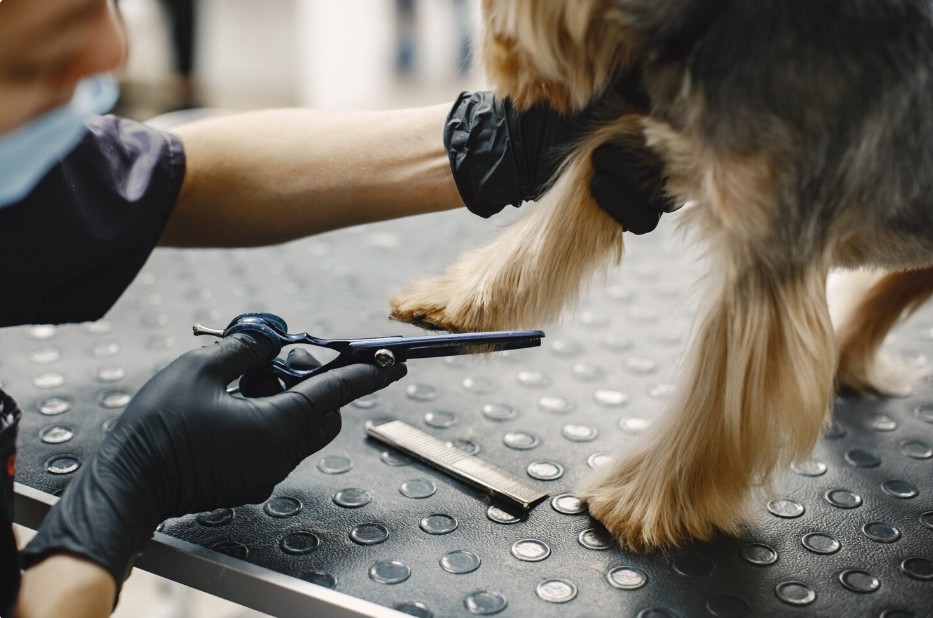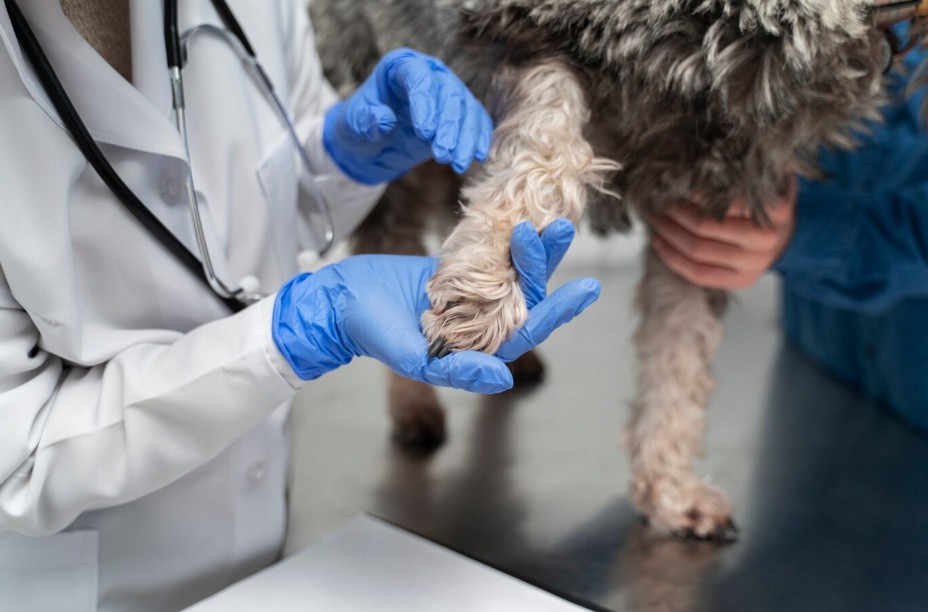Just like humans, dogs can suffer from different skin conditions and allergies that impact their comfort, health, and quality of life. Whether it’s constant scratching, strange patches of hair loss, or excessive licking, skin issues in dogs are common. However, the challenge is that many pet parents don't understand the common signs of skin issues that may be linked to underlying issues like allergies, infections, etc.
In this blog post, we will delve into how pet parents can identify dog skin allergy symptoms. Read more below.
6 Common Signs of Skin Problems in Dogs
1. Constant Itching or Scratching
This is the most common sign that something is wrong with your pet. While all dogs scratch occasionally, pay attention when they scratch consistently, particularly in the same area, as this can indicate some issues. Mites, allergies, or fungal infections may be the culprit for constant itching.
2. Excessive Chewing or Licking
Dogs may chew or lick their paws, legs, and other body parts to soothe irritation. Excessive chewing or itching can indicate discomfort, often caused by skin issues, yeast infections, or insect bites.
3. Inflamed or Red Skin
Inflammation or redness is a visible sign of skin problems in dogs. You can notice these symptoms on the belly, underarms, groin, or between the toes. Check whether the skin is visibly swollen or feels hot to the touch.
4. Hair Loss or Bald Patches
Excessive scratching or underlying skin problems like hot spots, mange, or bacterial infections can cause hair loss or bald patches in dogs. Hair loss can also be a sign of hormonal imbalances or food allergies.
5. Dry, Flaky, or Scaly Skin
Dandruff isn't just limited to humans. Dogs with scaly or dry skin may be suffering from conditions like seborrhea, poor nutrition, or an allergic reaction. Pay attention if you notice flakes in their coat or on their bed, as you may need to schedule a consultation with a veterinarian.
6. Bad Odor or Oozing Skin Lesions
If you notice a distinct, unpleasant odor from your dog, this can be due to certain skin allergies, like yeast or bacterial infections. Oozing sores, crusty lesions, or open wounds are definite signs that immediate attention is required.
Common Reasons for Skin Allergies in Dogs
Pet parents need to understand the root cause of the issues to manage their beloved furry companions’ skin conditions. Here are the main causes:
1. Environmental Allergens
Dust mites, pollen, and grasses are environmental triggers. These can cause seasonal allergies, popularly known as atopic dermatitis, which can lead to sneezing, itching, and skin inflammation.
2. Food Allergies
Some dogs are allergic to certain food ingredients, and most commonly, it can be beef, chicken, wheat, or dairy products. Food allergies usually cause itching around the face, ears, paws, and rear end, along with gastrointestinal issues.
3. Flea Allergy Dermatitis
Dogs can suffer from severe allergic reactions to even a single flea bite. This is called flea allergy dermatitis. Common symptoms include itching, hair loss, and red, irritated skin, particularly around the tail and lower back, with even a single flea bite.
4. Contact Allergies
Dogs can also show signs of skin allergies if they come in contact with things like certain fabrics, shampoo, or cleaning products. These reactions are usually seen on parts of the body with less fur, such as paws or belly.
5. Underlying Medical Conditions
Sometimes, skin problems in dogs can suggest serious underlying conditions like hypothyroidism, autoimmune disorders, or Cushing’s disease. So, pay attention if your dog experiences skin allergy symptoms persistently.
Other Important Link- https://www.justiceforleia.com/blog/food-and-nutrition-tips-for-a-healthy-dutch-shepherd/
Effective Steps to Manage Your Dog’s Skin Issues
1. Visit Your Veterinarian
Firstly, schedule a routine checkup with your veterinarian. They may conduct skin scrapings, allergy testing, or blood work to identify the exact cause of the problem.
2. Flea and Parasite Control
Constant flea and tick prevention is crucial for the well-being of your dog. You can use oral medications, topical treatments, and flea collars to prevent this issue.
3. Hypoallergenic Diet
If your vet suspects a food allergy, they might suggest an elimination diet and switch to a limited-ingredient food to identify and remove allergens.
Remember that early intervention is important for the comfort of your furry companions. Pay attention to these signs to help them get back to living their happiest, healthiest life.






